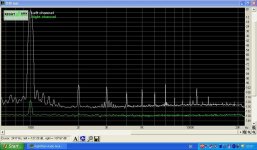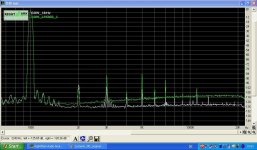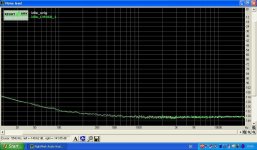Just uploaded the sim file, i hope you have LTC
Yes, I am also using LT Spice.
Thanks for putting more detailed.
0h, the current mirror at the output.... I have to think deeper...
I think the main issue regarding propagation delay of your comparator is that you are chasing Q5 and Q9 into saturation.
Could be improved by giving the output stage a negative rail and clamping the output voltage before Q5 or Q9 will saturate.
....have to think about asymetric slewing more detailed...
Could be improved by giving the output stage a negative rail and clamping the output voltage before Q5 or Q9 will saturate.
....have to think about asymetric slewing more detailed...
If you find the link it would be great.I think a Hysteresis modulator with a CCS control [i have seen this approach somewhere] is best option in order to mitigate any effects of voltage fluctuations. This will give more precision and control over how it actually performs.
From your short description, I am not fully getting the idea behind.
Hi Pergo,
yes in my opinion for class D it is better to go for a discrete comparator rather than ultra fast high end comparators.
The issue is noise.
The combination of speed, high gain and integrated mini hysteresis (usually not specified) form an extremely efficient HFjunk-to-NFnoise converter.
I did not measure the LT1016, but I experimented with the LT1711, which is an amazing beauty, but simply not the right thing for class D audio amps.
Somewhere here in the forum I had thread about jitter measurement...
I am considering the LM160 as integrated solution, because it is easily available almost everywhere, easy to use, medium speed.
In all my measurements better suited for class D than LT1711.
In order to see it in a real life situation which allows comparison vs a discrete solution I modified my SystemD_MD and got still pretty good results with noise figures that were similar in the lower frequency range and increasing over the audio band, going to approx 10db worse than my discrete solution at the upper audio band.
Overall the noise also with the LM360 the noise is not audible on the speakers (also when putting ears close to the tweeter).
I have to plug my headphones directly to the 600W output in order to hear it.
yes in my opinion for class D it is better to go for a discrete comparator rather than ultra fast high end comparators.
The issue is noise.
The combination of speed, high gain and integrated mini hysteresis (usually not specified) form an extremely efficient HFjunk-to-NFnoise converter.
I did not measure the LT1016, but I experimented with the LT1711, which is an amazing beauty, but simply not the right thing for class D audio amps.
Somewhere here in the forum I had thread about jitter measurement...
I am considering the LM160 as integrated solution, because it is easily available almost everywhere, easy to use, medium speed.
In all my measurements better suited for class D than LT1711.
In order to see it in a real life situation which allows comparison vs a discrete solution I modified my SystemD_MD and got still pretty good results with noise figures that were similar in the lower frequency range and increasing over the audio band, going to approx 10db worse than my discrete solution at the upper audio band.
Overall the noise also with the LM360 the noise is not audible on the speakers (also when putting ears close to the tweeter).
I have to plug my headphones directly to the 600W output in order to hear it.
Right. Do do you have real life experiences with them?
I remember someone reported issues of that dual version with the common floating substrate....
For dual P-Chanel the 2SJ109 could be considered.
On the other hand I am pretty confident that matching can achieved in a
sufficient way with the single types.
Back to the impact of the comparator to the noise figures...:
Attached some comparative measurements with LM360 and SystemD_MD.
In classD it is important to watch idle noise and operational noise, because with increasing load currents the HF disturbances increase and will also affect the NF noise.
First picture is the operation of the original SystemD_MD with discrete comparator, running 60W into 2 Ohms.
Second picture is the comparative operation of original version and implanted LM360 both running 60W into 2 Ohms. Don't panic about increased distortion, I think this could be readjusted by the shaping network. Also noise can be inproved by approx 5db with a 47pF cap directly across the comparator input.
Third picture is the idle noise of both versions. Shown decibel relate to 60W again. This is fitting to the findings with the headphone that both versions are pretty silent.
I remember someone reported issues of that dual version with the common floating substrate....
For dual P-Chanel the 2SJ109 could be considered.
On the other hand I am pretty confident that matching can achieved in a
sufficient way with the single types.
Back to the impact of the comparator to the noise figures...:
Attached some comparative measurements with LM360 and SystemD_MD.
In classD it is important to watch idle noise and operational noise, because with increasing load currents the HF disturbances increase and will also affect the NF noise.
First picture is the operation of the original SystemD_MD with discrete comparator, running 60W into 2 Ohms.
Second picture is the comparative operation of original version and implanted LM360 both running 60W into 2 Ohms. Don't panic about increased distortion, I think this could be readjusted by the shaping network. Also noise can be inproved by approx 5db with a 47pF cap directly across the comparator input.
Third picture is the idle noise of both versions. Shown decibel relate to 60W again. This is fitting to the findings with the headphone that both versions are pretty silent.
Attachments
Last edited:
Hi Pergo,
I think a discrete comparator plugin for this amp is a second step for upgrading, if desired. Similar like using High End OpAmps, or discrete OpAmps.
Hm, what do you (and all) think?
Should I add an overvoltage protection, which shuts down the amp in case any rail exceeds 95V?
Most likely my set up will not need it. Going to use a Hypex 1200 with synchronous rectifiers. Rail pumping will be no issue. Also between +/-82V towards the critical +/-100V there is enough margin to cover normal fluctuations of the mains voltage in Germany.
But depending on the psu design and country such a shut down might be a good idea.
The additional efforts for a precise shut down would be:
Two voltage refs, one dual Op amp, some small resistors and caps, one small NPN.
It could be an option on the PCB, which can remain unused without impact on the amp itself.
I think a discrete comparator plugin for this amp is a second step for upgrading, if desired. Similar like using High End OpAmps, or discrete OpAmps.
Hm, what do you (and all) think?
Should I add an overvoltage protection, which shuts down the amp in case any rail exceeds 95V?
Most likely my set up will not need it. Going to use a Hypex 1200 with synchronous rectifiers. Rail pumping will be no issue. Also between +/-82V towards the critical +/-100V there is enough margin to cover normal fluctuations of the mains voltage in Germany.
But depending on the psu design and country such a shut down might be a good idea.
The additional efforts for a precise shut down would be:
Two voltage refs, one dual Op amp, some small resistors and caps, one small NPN.
It could be an option on the PCB, which can remain unused without impact on the amp itself.
Something happened to LM360.
All my typical sources do not sell it anymore.
And it seems like TI killed the DIP version.... Grrrrr
Why didn't TI ask me if I agree on their portfolio cleaning after they bought National?!?
...search of an easily available and reasonably fast comparator (but not unsaint high end speed!!!) with output stage that can sink and source is reopened.
My personal focus would be a propagation delay between 15ns...30ns.
All my typical sources do not sell it anymore.
And it seems like TI killed the DIP version.... Grrrrr
Why didn't TI ask me if I agree on their portfolio cleaning after they bought National?!?

...search of an easily available and reasonably fast comparator (but not unsaint high end speed!!!) with output stage that can sink and source is reopened.
My personal focus would be a propagation delay between 15ns...30ns.
This and the monologue of my last thread is telling me that there is just little interest in class D DIY.
Also it tells me that there are around 20 knowledgeable class D freaks watching the thread, but not willing to share anything, because of the 280 CopyCats that lurk around the thread in silent spy mode .
In history there have always been these technically ignorant guys who only want to suck&sell the design, but it is sad they became powerful enough to kill the DIY-spirit in the class D section.
Hi Choco,
yes you said it.
i will help you to design a good class d.for IRFP4668 with 400KHz you need a huge current to drive this.don't go with totem-pole and IR2110 it will create more noise.
it is my suggestion only don't feel bad.
Regards
MANOJ
Last edited:
don't go with totem-pole and IR2110 it will create more noise.
Regards
MANOJ
How can you say that Totem pole creates noise?
How can you say that Totem pole creates noise?
Hi workhorse,
i am not argue this . did you try 400KHz with totem pole BJT (BD139/140) drive. practically i feel it is bad c'use of not getting good switching BJTs.
Regards
MANOJ
Hi workhorse,
i am not argue this . did you try 400KHz with totem pole BJT (BD139/140) drive. practically i feel it is bad c'use of not getting good switching BJTs.
Regards
MANOJ
I have driven a pair of IRFP4768 @450khz with Totem poles without any issues.
Hi workhorse,
i am not argue this . did you try 400KHz with totem pole BJT (BD139/140) drive. practically i feel it is bad c'use of not getting good switching BJTs.
Regards
MANOJ
BD139/140 are not good enough for high speed switching, there are much better devices available.
totem transistors
BD139/140 are not good enough for high speed switching, there are much better devices available.
Hi Woorkhorse
greetings can you reccomend any transistors for high speed switching for totem configuration just tested totem with BD139 BD140
i have zetex ztx751 ztx651 with me
warm regards
andrew
BD139/140 are not good enough for high speed switching, there are much better devices available.
Hi Woorkhorse
greetings can you reccomend any transistors for high speed switching for totem configuration just tested totem with BD139 BD140
i have zetex ztx751 ztx651 with me
warm regards
andrew
- Home
- Amplifiers
- Class D
- SystemD_2kW, any interest for an open design?


